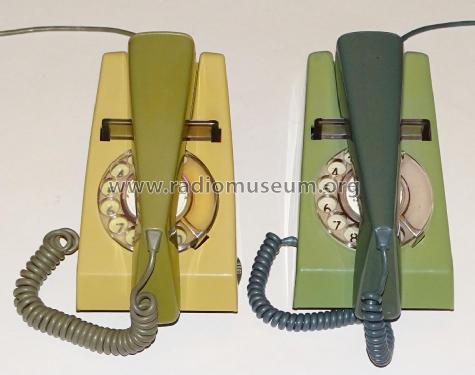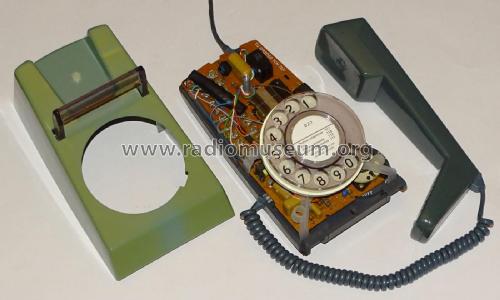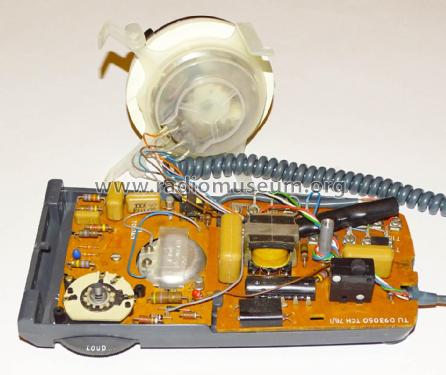Trimphone 712/722
Standard Telephones and Cables Ltd. (STC); London, Foots Cray
- País
- Gran Bretaña (GB)
- Fabricante / Marca
- Standard Telephones and Cables Ltd. (STC); London, Foots Cray
- Año
- 1965
- Categoría
- Telefonía, cableada y móvil
- Radiomuseum.org ID
- 304519
-
- Brand: Micromesh tubes
Haga clic en la miniatura esquemática para solicitarlo como documento gratuito.
- Numero de transistores
- 2
- Semiconductores
- BC108B
- Gama de ondas
- - no hay
- Tensión de funcionamiento
- No necesita alimentación
- Material
- Plástico moderno (Nunca bakelita o catalina)
- de Radiomuseum.org
- Modelo: Trimphone 712/722 - Standard Telephones and Cables
- Ancho, altura, profundidad
- 108 x 114 x 216 mm / 4.3 x 4.5 x 8.5 inch
- Anotaciones
-
The name Trimphone stands for Tone Ring Illuminated Model Phone. The name was retained after the illumination function was withdrawn because of safety concerns. Initially designed by STC and produced in Larne, Northern Ireland (code TCH), trimphones were also manufactured by GEC-AEI Telecommunications in Newton Aycliffe, County Durham (code GEN), and in the GPO Factory in Cwmcar in Wales (code FWR).
Rotary dial, rendered luminous in the early 712 models by a C-shaped glass tube of radioactive tritium gas inserted behind the dial number ring.
The model 722, introduced in 1971, had improved transmission circuitry, suitable for local lines with an attenuation of up to 10 dB at 1600 Hz.
2350 Hz warbling electronic ringer instead of magneto bell. The transistor oscillator in the ringer is powered by rectified ringing current. Adjustable volume, including a steadily rising intensity option. Early models used a single transistor with a thermistor to provide the crescendo feature, whereas later models used two BC108B transistors.
As issued, a ringer cut-off facility in the telephones was disabled. In the case that the trimphone is not the only telephone in an installation, the cut-off facility can be enabled by removing a stop screw from the ringtone control switch.
A dummy plate at the front of the base can be removed to fit a changeover press switch (No. 13A-2).
Receiver inset No. 3T and transmitter inset No. 15 are both housed in the handset earpiece, an acoustic horn within the handset handle coupling the mouthpiece to the transmitter. Note that this means that covering the mouthpiece may not entirely mute the sound pickup.
From 1973 some models were fitted inside the telephone base with a cylindrical blue plastic-covered component marked No. 7A. This is a regulator that is wired across the transmitter terminals to protect the inset from the effects of excessively high current on short lines.The first model was available in two-tone blue, off-white/light grey and grey/olive green, with the handset taking the darker colour.
- Peso neto
- 0.8 kg / 1 lb 12.2 oz (1.762 lb)
- Autor
- Modelo creado por Bruce Taylor. Ver en "Modificar Ficha" los participantes posteriores.
- Otros modelos
-
Donde encontrará 39 modelos, 34 con imágenes y 11 con esquemas.
Ir al listado general de Standard Telephones and Cables Ltd. (STC); London, Foots Cray
Colecciones
El modelo Trimphone es parte de las colecciones de los siguientes miembros.









